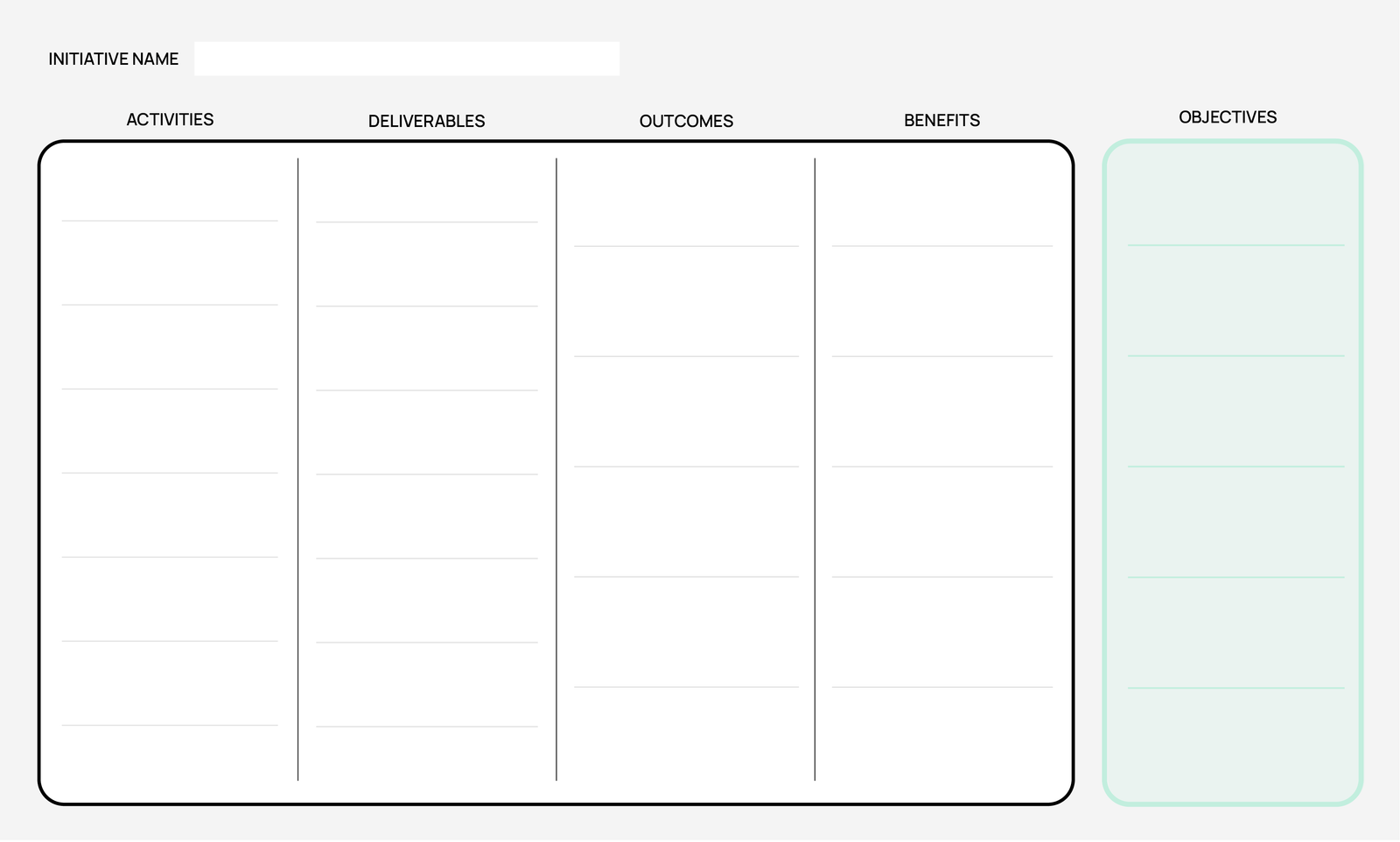Benefits Map
A Benefits Map is a visual tool used to illustrate the connection between what an initiative is delivering and the overarching business objectives it aims to support.
When kicking off work, creating a Benefits Map helps define what activities are required to achieve objectives.
Once activities are underway, the Benefits Map then helps to keep initiatives focussed on objectives.
A Benefits Map typically includes the following elements, illustrated with the example of building a new car park by a train station:
Activities: Activities required to produce the desired results. These may be grouped into initiatives.
Example: Design the layout, secure permits, construct.
Deliverables: An output that is produced as a result of the activities.
Example: A fully constructed and operational car park at the train station.
Outcomes: The broader impact or change that happens as a result of producing the deliverable.
Example: Increased use of trains, reduced congestion on roads.
Benefits: The positive results or advantages that the outcomes will bring. These can be things you can easily measure (tangible) or harder to measure (intangible).
Example: Tangible – Increased revenue from parking fees.
Example: Intangible – Improved commuter satisfaction
Objectives: Goals that the project aims to support or accomplish.
Example: Increase the number of people who use public transport by 5%.
Benefits mapping can be done at a project or programme level.
The results
- A clear view of project goals
- A clear logic of how activities support objectives

When to use it
Initiative establishment: When defining initiatives and aligning them with business objectives
Stakeholder communication: When seeking to demonstrate the value and impact of initiatives to stakeholders
Post-implementation review: When assessing whether the anticipated benefits of initiatives were realised and to identify areas for improvement
Strengths
Visual
Aligns work to business goals
Supports decision making
Weaknesses
Can be time-consuming to create
Can be subjective
How to use it?
What do I need to start?
Information on the goals and benefits an initiative is seeking to meet
How to use it?
Who to involve?
A Benefits Map can be done alone or with a team. Consider involving:
- People who know the organisation’s strategy and goals
- Representatives who are involved in the delivery of work
- Stakeholders with an interest in the outcomes of the work
Step by step
1
Define strategic objectives
Identify the high-level goals of the organisation. Ask questions like:
- What are the organisation’s strategic goals?
- Which of the goals is this initiative aiming to support?
2
List benefits
Specify the tangible and intangible benefits the initiative will deliver. Ask questions like:
- What positive results or advantages will this initiative deliver?
- Who will benefit from these outcomes?
3
Identify outcomes
Determine the intended impacts or change expected from delivering the initiative. Ask questions like:
- What change is required to deliver the expected benefits?
- How will outcomes be measured?
4
Outline deliverables
Identify the outputs required to deliver defined outcomes. Ask questions like:
- What specific outputs need to be created?
- What must be delivered for the initiative to be a success?
5
Define activities
Detail the activities required to produce the deliverables. Ask questions like:
- What activities are essential to achieve the desired outputs?
- Who will be responsible for these activities?
6
Create the benefits map
Create a visual map.
Identify the relationships between activities, deliverables, outcomes, benefits and objectives.